Why Tea Dropshipping Is a Hot Niche in 2025
Tea has long been one of the world’s favorite beverages – it’s the second most consumed drink globally after water. In 2025, this age-old staple is experiencing a modern renaissance in the e-commerce arena. The global tea market is booming, driven by health-conscious consumers and lifestyle trends. In fact, worldwide tea industry revenue is projected to reach hundreds of billions in the next few years, with steady growth of around 5–6% annually. This flourishing market means a huge opportunity for dropshippers: there’s strong, growing demand for tea products across the globe.
Importantly for dropshippers, tea is a consumable with recurring consumption behavior. Lovers of tea don’t just buy it once – they drink it daily and restock frequently, leading to excellent repeat business. In the U.S., over 87% of millennials drink tea, showing how ingrained it is in younger consumers’ lifestyles. Many tea aficionados develop routines (morning matcha for energy, afternoon green tea, evening herbal brew to wind down) that require continual purchases. This recurring demand makes tea an attractive niche; you can cultivate loyal customers who return monthly to try new flavors or refill their favorites. It also opens opportunities for subscription boxes (“Tea of the Month” clubs) and upsells, further increasing lifetime customer value. Simply put, tea fits perfectly into the 2025 zeitgeist: a health-driven, premium yet affordable indulgence that people enjoy repeatedly. All these factors combine to make tea dropshipping one of the hottest niches in 2025 for both global and U.S.-based e-commerce entrepreneurs.
15+ Best Tea Dropshipping Products in 2025
1.Premium Loose-Leaf Assam Black Tea
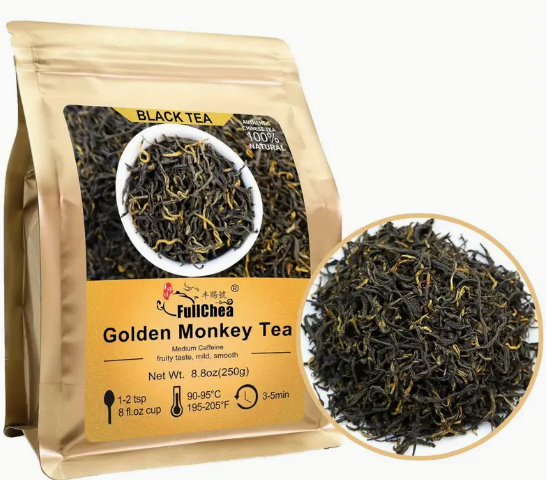
-
Features: Bold, malty flavor that stands up to milk and sugar.
-
Audience: Lovers of strong black teas and traditional English-style afternoon tea.
-
Dropshipping Tip: Pre-package in vacuum-sealed foil sachets; bundle with milk tea mugs and single-serve creamer packets.
2.Darjeeling Black Tea (“Champagne of Teas”)
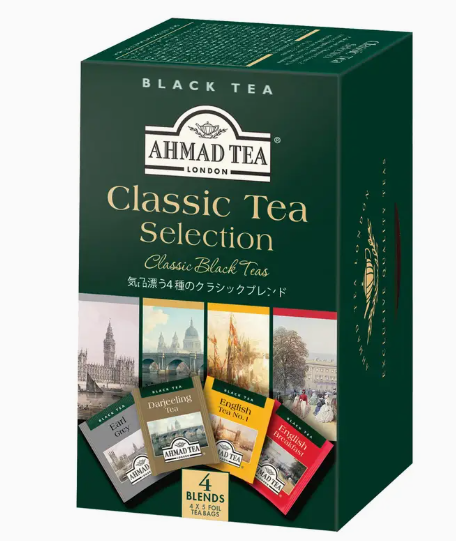
-
Features: Light body with delicate floral and fruity notes.
-
Audience: Connoisseurs who enjoy nuanced, tea-only infusions and elegant cold brews.
-
Dropshipping Tip: Offer in gift-box sets; push limited-edition holiday packaging with handwritten greeting cards.
3.Ceremonial-Grade Japanese Matcha
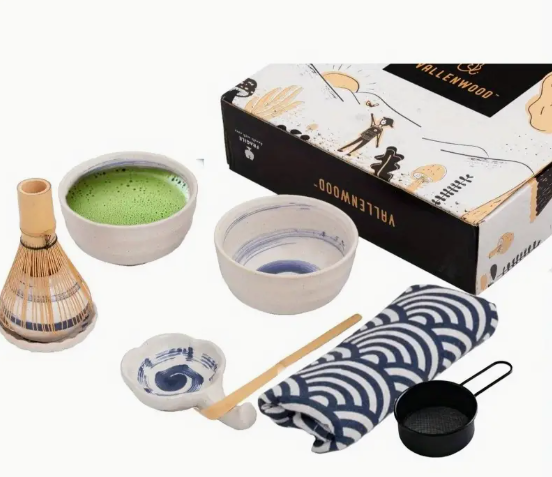
-
Features: Vibrant green color, ultra-fine grind, rich in amino acids and antioxidants.
-
Audience: Health-focused consumers, fitness enthusiasts, and tea-ceremony practitioners.
-
Dropshipping Tip: Sell in 30 g or 50 g tins; upsell with a matcha bowl (chawan) and bamboo whisk (chasen), plus a video brewing guide.
4.Organic Green Tea Bags

-
Features: Biodegradable mesh sachets, light vegetal flavor with a hint of sweetness.
-
Audience: Busy professionals, students, and eco-conscious tea drinkers.
-
Dropshipping Tip: Package as 20 or 50 bags per box; promote office subscription plans with flavor variety packs.
5.Tieguanyin Oolong Tea

-
Features: Semi-oxidized leaves with a pronounced orchid aroma and lingering sweetness.
-
Audience: Fans of traditional Chinese tea culture and fragrance-driven tasting.
-
Dropshipping Tip: Offer in small tins or loose-leaf pouches; create sampler packs of different aroma profiles (e.g. Tieguanyin, Dongding).
6.Milk Oolong Tea

-
Features: Naturally creamy, milky aroma without additives; smooth, buttery taste.
-
Audience: Drinkers who prefer a sweeter, softer tea experience without dairy.
-
Dropshipping Tip: Emphasize “natural milk aroma” on packaging; bundle with milk frother or specialty glass cups.
7.Chamomile Herbal Tea
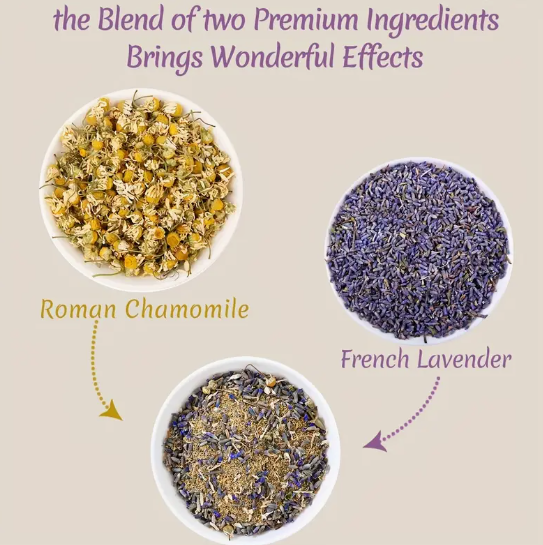
-
Features: Gentle apple-like scent, calming and sleep-promoting properties.
-
Audience: Stressed office workers, students, and anyone seeking better sleep.
-
Dropshipping Tip: Sell in 15-bag boxes with a “sleep tips” booklet; cross-sell with lavender essential oil or sleep masks.
8.Mint & Lemongrass Herbal Blend

-
Features: Refreshing, digestive-aiding, and naturally caffeine-free.
-
Audience: Summer‐time refreshment seekers, postpartum or pregnant women, and digestive health enthusiasts.
-
Dropshipping Tip: Use small tea sachets; highlight “hand-blended in small batches”; offer glass infuser mugs as add-ons.
9.Turmeric-Ginger Wellness Tea

-
Features: Warming, anti-inflammatory, supports circulation and digestion.
-
Audience: Fitness buffs, wellness-oriented customers, and those prone to cold sensitivity.
-
Dropshipping Tip: Market as “immune-boosting” and “cold-weather essential”; pair with a stainless-steel infuser tumbler.
10.Hibiscus & Berry Iced Tea
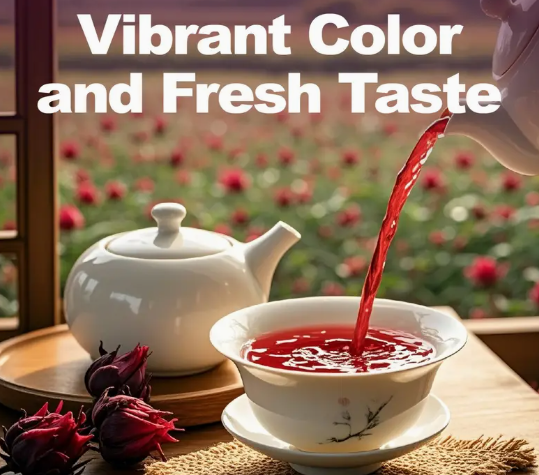
-
Features: Vibrant red color, tangy-sweet fruit flavor, perfect for cold brew.
-
Audience: Trendy Gen Z and Millennials who love Instagram-worthy drinks.
-
Dropshipping Tip: Bundle with a clear cold-brew pitcher and reusable ice molds; run summer promotion campaigns.
11.Bubble Tea Kit

-
Features: Comes with tea powder, tapioca pearls, flavored syrups, and reusable boba straws.
-
Audience: DIY bubble-tea fans and small café startups wanting a turnkey solution.
-
Dropshipping Tip: Offer multiple flavor options; include how-to video links; provide refill subscriptions for pearls and powders.
12.Travel Tea Tumbler
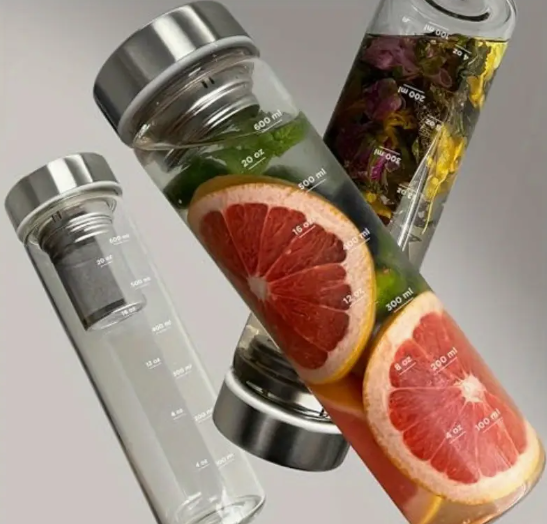
-
Features: Double-wall stainless steel, integrated mesh infuser, leak-proof lid.
-
Audience: Commuters, hikers, and on-the-go tea drinkers.
-
Dropshipping Tip: Offer custom logo printing; promote as corporate gifts; bundle with single-serve tea sachets.
13.Borosilicate Glass Teapot with Infuser
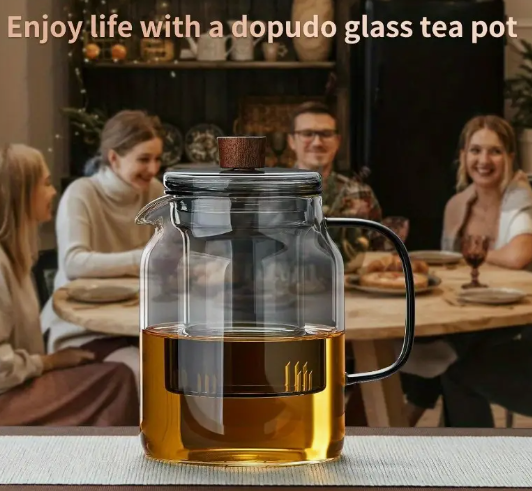
-
Features: Heat-resistant, crystal-clear design to watch leaves unfurl.
-
Audience: Tea-art enthusiasts, home décor aficionados, and gift buyers.
-
Dropshipping Tip: Sell as a set with a matching glass pitcher (cha hai) and tray; emphasize premium gift-box packaging.
14.Reusable Cotton/Silicone Tea Bags

-
Features: Eco-friendly, washable, free from plastic and chemicals.
-
Audience: Zero-waste consumers and DIY loose-leaf brewers.
-
Dropshipping Tip: Package in sets of 5 with different sizes; upsell with organic loose-leaf teas.
15.Airtight Tea Storage Canister

-
Features: Food-grade stainless steel or ceramic, odor-proof and moisture-resistant.
-
Audience: Tea connoisseurs who value freshness and long-term storage.
-
Dropshipping Tip: Offer custom engraving options; bundle with premium loose teas or tea scoops.
16.Monthly Tea Subscription Box
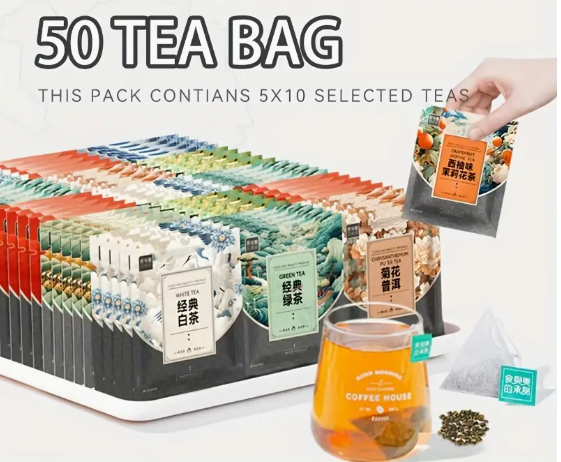
-
Features: Curated selection of 4–6 teas each month, plus tasting notes and a small gift.
-
Audience: Curious tea lovers who enjoy discovering new flavors and rituals.
-
Dropshipping Tip: Provide 3/6/12-month plans with discounts; offer an introductory gift (e.g. branded tea tin) to boost first-month conversions.
Premium Loose-Leaf Teas: High-Margin Dropshipping Picks
Premium loose-leaf teas (like high-grade green tea shown here) offer rich flavor and fetch premium prices. These gourmet teas attract connoisseurs and yield healthy profit margins for sellers.
One lucrative segment to tap into is premium loose-leaf teas. Enthusiasts are willing to pay top dollar for high-quality leaves that deliver an authentic tea experience. Loose teas are often sold in small quantities (by the ounce or gram) at significant markups – in fact, retail profit margins on premium loose teas can reach up to 400%. As a dropshipper, offering some of these high-margin picks can be very profitable. Below are 5+ must-have loose-leaf tea products to consider, each with strong appeal and pricing power:
-
Ceremonial Grade Matcha – Japan’s Finest Green Tea: Matcha continues to ride a wave of global popularity. This vibrant green powder – made from finely ground shade-grown tea leaves – is beloved for its rich umami taste, antioxidant boost, and versatility (lattes, smoothies, desserts, etc.). Premium ceremonial-grade matcha (the highest quality, used in traditional tea ceremonies) commands high prices due to its labor-intensive production and vivid flavor. Social media (think Matcha lattes on Instagram) has kept matcha in the spotlight, and the market is still expanding rapidly (expected 11%+ annual growth over the coming decade). Dropshippers can charge a premium for authentic Japanese matcha in stylish tins, appealing to health enthusiasts and foodies. Profit potential is excellent – small 30g tins of top-grade matcha often retail for $20–$30+.
-
Artisanal Oolong Tea – Complex Flavor, Connoisseur Appeal: Oolong teas are semi-oxidized teas known for their complex flavor profiles and aroma. High-end oolongs (like Taiwanese High Mountain Oolong, Tie Guan Yin (Iron Goddess), or Da Hong Pao (Wuyi rock tea)) have almost mythic status among tea drinkers. They offer a luxurious experience – aromatic notes ranging from orchid and honey to roasted nuts – and are often produced in limited quantities. Because of this, premium oolongs can be pricey per pound. For example, “Milk Oolong,” prized for its creamy scent, or aged Wuyi oolongs can fetch a high price and still sell out. These teas attract connoisseurs seeking quality, meaning you can position them as exclusive, high-margin products. Even a small packet (50–100g) of a rare oolong can retail at a significant markup due to its rarity and craftsmanship.
-
Jasmine Dragon Pearls – Luxurious Scented Green Tea: Jasmine pearl tea is a premium loose-leaf green tea from China, crafted by hand-rolling tender tea buds into pearls and infusing them repeatedly with fresh jasmine blossoms. The result is an intensely fragrant tea that unfurls beautifully when brewed. The intricate hand-processing and enchanting aroma make Jasmine Dragon Pearls a top-shelf item. Customers adore it for its soothing, floral flavor and the visual appeal of the pearls. You can highlight that it’s labor-intensive and traditionally made, justifying a higher price. Tea vendors often charge a premium for jasmine pearls, and tea lovers pay for the quality and experience. This is an ideal dropshipping product to target a luxury-tea segment (e.g., bridal gift boxes, spa and relaxation kits, etc.) with great profit margins.
-
First-Flush Darjeeling – “Champagne of Tea”: Darjeeling black tea from India is renowned worldwide – especially the first flush (the very first spring harvest) which is celebrated for its delicate muscatel flavor. Darjeeling is often called the Champagne of teas, and connoisseurs eagerly await each year’s first flush crop. Because supply is limited (Darjeeling is a small region) and demand is high, premium Darjeeling can be expensive. Selling authentic, garden-direct Darjeeling loose leaf (with estate names and harvest dates as quality markers) lets you tap into a segment of serious tea drinkers. Profit potential: Darjeeling’s cachet allows strong markups – for instance, 100g of first-flush Darjeeling might wholesale for $5–$8 but retail for $20–$30+. Emphasize its limited seasonality and aroma to justify its premium price. This tea appeals to those seeking an upscale, refined brew.
-
Silver Needle White Tea – Delicate and Rare: For an even more niche offering, consider Silver Needle (Bai Hao Yin Zhen), a famous Chinese white tea. It consists solely of young tea buds covered in silvery down. The flavor is very gentle, slightly sweet and floral. Silver Needle is often organically grown and harvested only for a few days each spring, making it one of the rarer and most expensive white teas. Health-conscious consumers also appreciate that it’s low in caffeine and high in antioxidants. Dropshipping Silver Needle in small artisan packets (with an origin story from Fujian, China) can attract tea purists. Since it’s sold in limited quantities, sellers can charge a high price per ounce. This yields high margins while offering customers an exclusive experience of sipping one of the world’s finest teas.
-
Aged Pu-erh Tea – A Unique Collector’s Tea: Pu-erh is a fermented tea from Yunnan, China, often pressed into cakes or bricks. It’s unique because it improves with age like wine, developing rich, earthy flavors over years or decades. There’s a growing market of Pu-erh enthusiasts (especially in the U.S. and Europe) interested in its probiotic health benefits and the novelty of aged tea. You can list ripe (shou) Pu-erh for customers who enjoy dark, bold tea, or raw (sheng) Pu-erh cakes for collectors who might age them further. Some rare vintage pu-erh cakes sell for hundreds or thousands of dollars in specialty circles. While most dropship offerings won’t be that high-end, even mid-range Pu-erh is a great addition to a tea catalog to diversify your product mix. It has a story (fermented in caves, traditional tea auctions, etc.) that you can leverage in marketing to justify a premium price compared to standard black tea.
Each of these loose-leaf teas carries an aura of quality and tradition that appeals to serious tea drinkers. By sourcing them from reliable suppliers, you can cater to the premium segment and enjoy fat markups. Remember, presentation and storytelling matter here: use attractive images and describe the tea’s origin, flavor notes, and proper brewing method to create a luxe feel. Premium tea buyers love education and authenticity. With the right branding, you might even achieve the 500–1000% markups that are possible in the specialty tea world – for example, sourcing a high-grade tea for a few dollars and selling for $20+. Loose-leaf tea is a high-margin category where quality-focused customers are willing to spend, making it a cornerstone of a profitable tea dropshipping store.
Wellness Teas & Functional Blends
Beyond traditional teas, wellness and functional teas are a red-hot trend in 2025. These are herbal or blended teas crafted for specific health benefits – think detox teas, sleep aids, immunity boosters, and stress-relief blends. As consumers turn toward natural remedies, functional teas have surged in popularity as daily wellness rituals (in 2025 they’re more than just a fad – they’ve become go-to solutions). Dropshipping wellness teas is a smart move because you tap into the huge health & self-care market. Many buyers actively seek out teas with added herbs, vitamins, or adaptogens to support their lifestyle goals. In fact, the functional and medicinal tea segment – teas infused with things like adaptogenic herbs, probiotics, or CBD – is gaining massive popularity for benefits like stress relief, digestion, and immunity. Here are some top functional tea products to consider:
-
Detox Tea Cleanses: Detox teas remain consistently popular, especially for customers interested in weight management, cleansing routines, or post-holiday resets. These blends often include ingredients like dandelion root, milk thistle, ginger, lemongrass, and green tea – herbs known for supporting liver function, metabolism, and flushing out toxins. Market data shows detox teas on a sharp rise: the global detox tea market is projected to grow explosively (one report forecasts from about $3 billion in 2025 to over $12 billion by 2033, ~20% CAGR), fueled by millennials and wellness influencers promoting cleansing regimens. For dropshippers, offering a 14-day detox tea kit or morning cleanse tea can be very profitable. Highlight benefits like reduced bloating, clearer skin, and energy boost – these claims (paired with disclaimers) resonate with health-conscious buyers. Successful marketing often involves influencer testimonials or challenges (e.g., “#Teatox challenge”) to spur sales. Given the demand, detox teas are a must-have in a wellness tea lineup (just ensure the supplier has quality ingredients, as savvy consumers expect natural and safe formulations).
-
Sleep Teas & Calming Night Blends: With stress and insomnia on the rise, sleepytime teas are huge sellers. These caffeine-free herbal blends help consumers unwind and improve sleep quality. Common ingredients are chamomile, valerian root, lavender, passionflower, and lemon balm, all known for their calming or sedative effects. A “Sleep Tea” product (for example, a chamomile lavender bedtime blend) appeals to a broad audience – from busy professionals to moms to students – anyone looking to relax in the evening. Marketing angle: it’s a natural alternative to pills, creating a soothing nightly ritual. Emphasize ingredients and their traditional uses (e.g., chamomile for relaxation, valerian to reduce anxiety). You can even target niches like “stress relief tea” or “anti-anxiety tea” with similar formulations. These products tend to have high reorder rates if they taste pleasant, because better sleep is a recurring need. Consider offering an evening tea bundle (teapot + herbal blend) for upsells. There’s steady demand here, as evidenced by the growth of relaxation beverages in general. Ensure your supplier provides fresh, aromatic herbs (since potency matters to customers) and mention any non-caffeine / all-natural aspects clearly in your product copy.
-
Digestion Support Teas: Many people turn to herbal teas to aid digestion, relieve tummy troubles, or beat bloating. Digestive tea blends often feature herbs like peppermint, ginger, fennel, licorice, and spearmint. For example, a ginger-mint digestive tea can appeal to those who want relief from indigestion or nausea in a gentle, natural way. Another popular variant is masala chai or spiced teas with ingredients such as cardamom and clove, which not only taste great but help with metabolism. You could dropship a “Detox and Digest” dual-purpose tea combining detoxifying and digestive herbs to cover two bases. Marketing these teas as part of a healthy routine (e.g., “Sip after meals to beat the bloat”) can attract customers who prefer herbal remedies over OTC drugs. It’s notable that teas for gut health and weight management are in demand, aligning with trends in holistic wellness. Position your digestion support tea as a soothing after-dinner ritual. Bonus: such teas are often caffeine-free, which widens the potential customer base (usable day or night, and for all ages). Make sure to communicate any functional claims carefully (e.g., “may ease bloating” rather than a medical claim) and back it up with ingredient info – consumers appreciate transparency in wellness products.
-
Immunity-Boosting Teas: Especially after the global pandemic, immunity has become a top-of-mind benefit that consumers seek from foods and beverages. Immune support teas typically include ingredients high in vitamins or believed to strengthen the immune system. Popular ones are turmeric, echinacea, elderberry, ginger, moringa, and vitamin C-rich fruits (like hibiscus or rosehip). A dropshipping bestseller here could be a Turmeric Ginger tea – often called the “anti-inflammatory power duo” – known to reduce inflammation and bolster immune response. Likewise, an Elderberry echinacea blend is attractive during cold and flu season. Market insight: the demand for immunity beverages spiked in recent years and remains elevated; consumers love the idea of fortifying their body naturally. A report noted that the emergence of viruses like COVID-19 has increased demand for healthful, immunity-boosting drinks like detox and herbal teas. This is a year-round opportunity but can especially be marketed in winter months or back-to-school season (when people prep their immune system). Use content marketing to educate buyers on how each ingredient contributes (e.g., “echinacea has been traditionally used to reduce cold symptoms”). By dropshipping an immunity tea, you provide timely solutions and can benefit from recurring seasonal sales peaks when everyone is trying to avoid getting sick.
-
Adaptogen Blends & Stress Relief: Adaptogens are a buzzword in wellness. These are herbs and mushrooms believed to help the body adapt to stress and restore balance. Examples include ashwagandha, holy basil (tulsi), ginseng, reishi and lion’s mane mushrooms, maca, and Rhodiola. Adaptogenic tea blends are trending as natural stress reducers or energy boosters without caffeine. For instance, a Tulsi (Holy Basil) tea is revered in Ayurveda for its stress-regulating and immune-supporting properties. A mushroom tea mix (with reishi or chaga) appeals to biohackers and health geeks, as mushroom superfoods are rising stars in the beverage world. You could offer a dropship product like “Calm Mind Adaptogen Elixir” – a blend of ashwagandha, tulsi, and cinnamon – marketed for daily stress relief and mental clarity. Or a “Energy Adaptogen Tea” with ginseng, maca, and green tea for a balanced energy lift. These teas typically command premium pricing because adaptogen ingredients can be exotic or organic. Notably, functional teas with adaptogens are identified as a major growth opportunity in the tea industry. When selling adaptogen teas, storytelling is key: explain the ancient usage (e.g., “Used in traditional Chinese medicine for centuries...”) and modern benefits (“helps manage stress hormones”). This educates the customer and justifies the price. Also, target marketing to work-from-home professionals, students, or fitness enthusiasts looking for that extra edge in wellness.
All of these wellness teas have strong market appeal in 2025. They cater to consumers’ specific needs and fit into popular health routines (morning detox, afternoon energy, nighttime relax, etc.). For dropshippers, they also encourage repeat purchases: if a customer feels a tea is improving their sleep or digestion, they’ll be back for more. Make sure to source from reputable suppliers – freshness and correct ingredient sourcing are crucial (customers can tell if a tea is stale or weak). It’s wise to highlight any quality certifications (organic ingredients, non-GMO, caffeine-free, etc.) prominently, as that builds trust. The bottom line: functional teas are on fire. They marry the profit potential of the supplement industry with the simplicity of a daily cup of tea. By adding a line of wellness teas and clearly communicating their benefits, you can position your store as a destination for health-conscious tea lovers. (Just remember to include appropriate disclaimers that these teas are not medical cures – focus on “support” and “balance” language.)
Seasonal & Limited-Edition Teas That Sell Fast
One clever way to drive urgency and excitement in your tea store is by offering seasonal and limited-edition teas. Much like pumpkin spice lattes herald the start of fall in coffee shops, seasonal tea blends can become hot-selling sensations that fly off the shelves during their peak season. These teas play on seasonal flavors and festivities – attracting customers looking for a timely treat – and because they’re limited release, they create a “get it before it’s gone” impulse. Many tea brands successfully roll out special editions each season, knowing fans will eagerly await and quickly purchase them (as one tea retailer notes, once seasonal teas are gone, they’re gone). By dropshipping seasonal teas, you can capitalize on trend-driven demand and refresh your catalog throughout the year. Here are some winning examples:
-
Pumpkin Spice Chai (Fall Favorite): When autumn arrives, pumpkin spice mania takes over. A Pumpkin Spice Chai blend is an absolute winner for the fall season. It typically combines black tea or rooibos with pumpkin pie spices like cinnamon, nutmeg, clove, and ginger – sometimes with real pumpkin pieces or flavor. This tea offers the cozy, spicy-sweet profile that consumers crave as the weather cools. Notably, the pumpkin spice trend is massive (originating from the famous latte). In fact, Starbucks’ Pumpkin Spice Latte – which inspired countless pumpkin products – “continues to be Starbucks’ most popular seasonal beverage enjoyed by customers around the world”. That cultural phenomenon translates to tea as well: many non-coffee drinkers or tea lovers want their own PSL alternative. A pumpkin spice chai latte mix or loose-leaf blend can be marketed as a caffeine-free evening treat or a daytime pick-me-up with milk. Expect demand to spike from late August through Thanksgiving. To maximize sales, use fall-themed marketing visuals (orange leaves, pumpkins) and consider offering this as a limited edition “fall special.” The FOMO (fear of missing out) will drive customers to buy now rather than later.
-
Holiday Herbal Blends (Winter Festivities): As the holiday season (December/Christmas time) approaches, consumers love products that bring out festive moods. Holiday-themed teas – for example, a “Winter Spice” herbal blend – sell very well as gifts and personal indulgences. Common ingredients include cinnamon, cardamom, clove, orange peel, apple pieces, vanilla, peppermint, cocoa, or nutmeg. Think of flavors like gingerbread, eggnog, candy cane, or mulled wine inspired teas. Dropshipping ideas: a Peppermint Cocoa Rooibos (tastes like peppermint hot chocolate but in tea form), or an Eggnog Spice Black Tea (with vanilla, nutmeg, and black tea). These blends often come in attractive holiday packaging (tins with Christmas designs, for example) which makes them great for gifting – consider suppliers who offer festive packaging. Limited-edition holiday teas tend to sell out quickly in November and December as people snap them up for stocking stuffers or to serve at holiday gatherings. Emphasize in your marketing that these are limited releases for the season. You can also bundle them: e.g., a “Holiday Tea Trio” assortment. By doing so, you increase cart value and provide a ready-made gift option. After New Year’s, interest will drop off, so plan these as time-sensitive products and use that urgency in your copy (“available only through December 31” or “limited batches available”). The seasonality makes them special and can give your Q4 sales a nice boost.
-
Spring Floral Teas (Springtime Limited Editions): Come spring, people’s palates shift to lighter and floral flavors, mirroring the blooming of flowers. A lovely niche is spring floral teas. Examples include a Cherry Blossom Green Tea (green tea scented with cherry blossoms or blended with rose petals and cherries), Jasmine Rose Oolong (combining two aromatic flowers), or even herbal tisanes with tulsi and hibiscus for a flowery aroma. These teas tap into spring festivals (like sakura season in Japan) and themes of renewal and freshness. You can market them around March–May. The appeal lies in their delicate, aromatic profile – perfect for afternoon tea parties, Mother’s Day gifts, or simply celebrating warmer weather. Limited-edition spring teas can be dropshipped in beautifully designed sachets or tins featuring floral artwork, which catch the eye of shoppers. Since these are not as ubiquitous as pumpkin spice, they add an exclusive touch to your store’s offerings. Highlight any unique story (e.g., “only harvested during two weeks of spring bloom” or “inspired by the cherry blossoms in Kyoto”) to increase the perceived value. These blends may not sell in volumes as huge as pumpkin spice, but they attract a refined segment of customers and can set your brand apart as a tea curator. Also, they photograph well – use those pastel colors and flower motifs on Instagram to draw interest when spring arrives.
-
Summer Iced Tea Blends & Fruity Infusions (Summer Hits): Don’t forget summer – a season for refreshing iced teas and fruity infusions. In summer, people seek cool, quenching flavors. Top picks include peach iced tea, lemon ginger cold brew, tropical hibiscus punch, or berry-infused green teas. You might dropship a special “Summer Berry Hibiscus Tea” that’s caffeine-free, bright red, and delicious iced – targeting health-conscious consumers as an alternative to sugary juices. Another idea is a “Tropical Mango Green Tea” that can be marketed as a cold-brew tea for beach days. These seasonal blends often emphasize fruit pieces, hibiscus petals, and citrus, creating a vibrant flavor and color. Marketing angle: perfect for iced tea, lemonade-tea mixes, or even tea-based popsicles. You can tie promotions to summertime activities (picnics, BBQs, Fourth of July in the U.S., etc.). Limited-edition summer teas can come in fun, colorful packaging (maybe sachets with pineapples or sunshine icons). Again, urgency plays a role – for example, push a “Summer Limited Collection” available only from June to August. Customers tend to act when they know a product won’t be around forever. These teas also lend themselves to social media challenges or recipes (e.g., “Snap a pic of your tropical iced tea recipe to win a coupon!”) to boost engagement. While core tea drinkers will buy tea year-round, seasonal offerings like these can lure in more casual buyers who might normally only think of tea in colder months.
The key with seasonal and limited-edition teas is that they create excitement and urgency. They can give you quick sales bursts and free marketing buzz (customers might share about a unique seasonal flavor they tried). To execute this well, coordinate with suppliers who can stock these flavors at the right times and in the right packaging. Plan your marketing calendar to start promoting a seasonal tea about 2–4 weeks before the season kicks off (people start hunting for pumpkin spice in early September, holiday teas by mid-November, etc.). Use email and social media to announce the launch and countdown to when they’ll no longer be available. This replicates what big brands do and drives that “buy now” mentality. Done correctly, seasonal teas will sell fast – and leave your customers eagerly waiting for what you’ll introduce next season.
How to Source Quality Tea Suppliers for Dropshipping
Success in tea dropshipping isn’t just about what you sell – it’s also who you source it from. Tea is a consumable product, so quality and consistency are paramount. Customers expecting a fragrant, flavorful cup will be disappointed if they receive stale or poorly packaged tea. Moreover, factors like freshness, packaging, and origin can significantly impact reviews and repeat business. Therefore, finding reliable, high-quality tea suppliers is a crucial step. Here are some tips for sourcing great tea suppliers (and ensuring your tea business brews up success):
-
Prioritize Freshness and Quality Control: Tea flavor can degrade over time or with exposure to air and moisture. Look for suppliers who guarantee fresh stock – ideally, they source teas from recent harvests or high-turnover inventory. A good supplier will often perform quality inspections or cuppings (tastings) to ensure each batch meets standards. Some dropshipping platforms will handle this for you; for example, CJdropshipping inspects all items for quality before shipping, which gives assurance that the tea leaves are as described and not contaminated. Whether you work with a tea wholesaler or a dropshipping agent, ask about their quality control: Do they store teas properly (cool, dry conditions)? How often do they restock from origin? Can they provide samples? Ideally, order a sample yourself to experience the product first-hand. Remember, your brand’s reputation is tied to the cup of tea your customer brews – so partner with suppliers who treat tea like the delicate product it is.
-
Check Packaging and Presentation: The supplier’s packaging is the first thing your customer will see when the tea arrives. It needs to both protect the tea’s freshness and look professional. Seek suppliers that use airtight, food-grade packaging (like foil-lined pouches, tins, or vacuum-sealed packs) to preserve aroma and flavor. Packaging should also prevent light exposure (which can degrade tea, especially green and white teas). If you are targeting a premium market, consider suppliers that offer attractive packaging you’d be proud to put your brand name on. Some suppliers even allow custom labeling or packaging – meaning you can private-label the teas with your own logo. (Notably, CJdropshipping offers custom packaging services and even print-on-demand options, so customers receive packages that look like they came directly from your brand). Well-packaged tea not only stays fresh but also enhances unboxing experience, increasing the chance of a positive review. Don’t overlook details like labeling (clearly showing the tea type, ingredients, expiry date, etc.) – compliance and professionalism go hand in hand here.
-
Insist on Certifications (Organic, Fair Trade, etc.) if Important to Your Niche: Many tea consumers, especially in the health and wellness segment, care deeply about sourcing and ethics. If you plan to market your teas as organic, non-GMO, or fair-trade, you must ensure your supplier has the proper certifications and documentation. Reliable tea wholesalers will often display certifications like USDA Organic, EU Organic, Fair Trade Certified, Rainforest Alliance, and so on for the teas that qualify. These certifications speak to how the tea is grown (without synthetic pesticides for organic) or how farmers are compensated (fair trade). They can be a selling point justifying higher prices. Always verify the supplier’s claims – for example, ask for the organic certificate for a particular tea lot if needed. Additionally, ensure any flavored teas use natural ingredients and are FDA compliant for food products in your target market. Quality suppliers will be transparent about ingredients and sourcing. By choosing the right partners, you not only protect your customers but also align with the values (sustainability, health, ethics) that many tea buyers hold dear.
-
Evaluate Supplier Reliability and Inventory Consistency: One challenge in dropshipping is inventory stock-outs or slow fulfillment. This can be especially problematic if a tea becomes a bestseller and suddenly the supplier can’t keep up. Research suppliers’ track records: do they maintain consistent stock levels of core products? What happens if demand spikes – can they scale or offer a similar alternative? Look for partners with a wide network or large inventory so that a single origin shortfall won’t cripple your store. It’s often safer to work with a supplier who has multiple sources (e.g., several types of Earl Grey from different makers) or who is themselves a large tea importer. Read reviews or ask around in dropshipping forums about suppliers’ fulfillment times and communication. Fast shipping is also a part of reliability – customers don’t want to wait weeks for their tea. Some platforms have domestic warehouses: for instance, CJdropshipping operates global warehouses (US, EU, etc.) and can ship from the nearest location to customers for faster delivery. This is a huge plus for keeping customers happy and ensuring those repeat orders. Reliability also extends to how the supplier handles issues – broken packages, wrong item sent, etc. Pick a supplier with responsive customer service and clear policies so you can, in turn, uphold great service to your buyers.
-
Consider Niche Specialty Suppliers vs. General Dropshipping Platforms: You have two main routes – partnering with specialized tea wholesalers/suppliers or using broad dropshipping platforms that offer tea among many products. Niche tea suppliers (some even offer dropshipping programs) might provide superior expertise, unique blends, or even help educate you on the product. They may have stricter quality focus but could require a relationship (sometimes even a small fee or MOQ). On the other hand, large platforms like AliExpress or CJdropshipping offer convenience and variety – you can source hundreds of tea types and related products in one place. CJdropshipping in particular is a leading sourcing option to highlight: it’s known as an all-in-one dropshipping platform that can handle sourcing, warehousing, and fulfillment for you. CJ has millions of products listed (including teas and teaware), and importantly, they charge no upfront or monthly fees – you only pay the wholesale cost and shipping when an order comes in. They also provide value-adds like the quality checks and custom branding mentioned above, plus integration with major e-commerce platforms for automation. Many dropshippers praise CJ for its ability to source even custom requests – say you want a specific herbal blend not listed, they can often find it. Its global warehouse network means you can potentially store popular teas in the US or EU for 2–5 day delivery to customers, which is a huge competitive advantage in an era when buyers expect Amazon-level speed. So, if you’re looking for a robust solution, CJdropshipping stands out for product variety, low cost, and end-to-end support in the dropshipping model. Of course, always compare options – some sellers use a combination (e.g., a specialty local tea supplier for a signature blend and a platform like CJ for standard items). The goal is to ensure you have quality tea, packaged well, delivered fast, with minimal headaches.
In summary, take your time in choosing the right supplier(s) – it’s the backbone of your business. A great tea supplier will provide fresh, flavorful products, solid packaging, and dependable fulfillment, allowing you to focus on marketing and growth. Don’t be afraid to ask questions or request samples; reputable suppliers will understand that you need to be confident in what you’ll be selling. With the right sourcing strategy, you set the stage for strong customer satisfaction in your tea dropshipping venture.
Marketing Strategies for Tea Dropshipping Success
Having a fantastic selection of teas and a reliable supplier is half the battle – now you need to effectively market your tea store to drive traffic and sales. Both beginner and advanced e-commerce sellers should leverage a mix of digital marketing tactics to reach tea enthusiasts, educate them, and turn them into loyal customers. Here are some actionable marketing strategies tailored for tea dropshipping:
-
Influencer Marketing – Spread the Word Through Tea Lovers: One of the fastest ways to build credibility and buzz is by partnering with influencers in the food, wellness, or lifestyle space. Identify tea influencers or health & wellness content creators on Instagram, TikTok, or YouTube who have an audience that overlaps with your target demographic (for example, a yoga instructor who often features calming rituals, or a foodie who reviews beverages). You can send them samples of your best teas and have them share their honest review or create content (like an unboxing, brewing demo, or a morning routine featuring your matcha). Influencer posts can introduce your brand to thousands of potential customers in an authentic way. It’s especially effective for highlighting unique blends or demonstrating how to use a product (e.g., making a trendy dalgona matcha latte). Influencer marketing has proven successful in the tea niche – even big companies leverage it.
-
Product Storytelling – Sell the Experience, Not Just the Tea: In a crowded market, storytelling is what sets brands apart. Tea is a product rich with story potential – from its cultural heritage to the farmers who grow it to the personal moments of calm it brings. Embrace content marketing: Start a blog or at least include engaging descriptions that tell the story behind each tea. For example, describe how your Darjeeling tea comes from a family-owned garden in the Himalayas, or how your ceremonial matcha is stone-milled by traditional artisans in Japan. This not only educates but also creates an emotional connection. You could write articles like “The History of Chai and How to Brew the Perfect Cup” or “5 Wellness Benefits of Tulsi Tea (Holy Basil) for Stress Relief,” which both provide value and naturally spotlight your products. Optimize these posts for SEO with relevant keywords (“best herbal teas for relaxation”, “how to brew matcha”, etc.) to draw organic traffic. Storytelling extends to your brand’s mission: for instance, if you prioritize sustainable sourcing or donate a portion of profits, share that narrative. Remember, you’re not just selling dried leaves – you’re selling comfort, health, focus, or escape. Crafting a compelling brand story will resonate with customers looking for authenticity and meaning in what they buy, turning them into loyal advocates.
-
Social Media & Visual Marketing – Instagrammable Teas: Tea is very visual – vibrant green matcha, deep red hibiscus, artful lattes with foam, elegant teaware – making it perfect for platforms like Instagram and Pinterest. Leverage these channels to post high-quality photos and short videos. Showcase the aesthetic side of tea: a zen tea setup in the garden, a close-up of steeping flower tea, a before-and-after of a blooming tea ball in water, or user-generated content of customers holding your tea cup. Consistency is key: maintain an Instagram feed that reflects your brand vibe (be it cozy, luxurious, minimalist, etc.). Use relevant hashtags (#teatime, #tealover, #organictea) to reach tea communities. Engage with your followers by asking questions (e.g., “How do you take your Earl Grey – with milk or lemon?”) to spark conversation. Another idea: share short brew guide videos on TikTok or Reels – these could potentially go viral (like a satisfying clip of matcha whisking or a recipe for iced strawberry green tea). Social media isn’t just about pretty pictures; it’s a trust-building and community-building tool. Respond to comments and DMs promptly – showing there are real tea enthusiasts behind the brand. According to Sprout Social, 78% of consumers are willing to buy from a brand after a positive interaction with them on social media. So, cultivate those positive interactions. You can also collaborate with other pages (e.g., do a giveaway with a yoga page or a ceramics (teaware) maker). The shareable nature of tea (people love to tag their friends in posts about things like a new lavender latte recipe) will help you organically grow your reach.
-
Email Marketing & Education Sequences: Email remains one of the highest ROI marketing channels, especially for nurturing customer relationships and driving repeat sales. (In fact, the average ROI for email in the food & beverage sector is reported around $42 for every $1 spent – truly cost-effective!). Start building an email list from day one – via a signup on your website (“Join our Tea Tribe for 10% off your first order and weekly tea tips”) or capturing emails at checkout. Then, implement automated email sequences to engage subscribers. For example, a Welcome Series: the first email could welcome them and share your brand story, the second email could be “How to brew the perfect cup of [their purchase]” with tips, the third could offer a coupon on their next purchase or introduce bestsellers. By educating customers (say, an email explaining the difference between green vs. black tea benefits, or a guide to making iced tea without bitterness), you position your brand as an expert and keep people interested. Also send regular newsletters – these can feature new product launches (e.g., announcing your fall seasonal line), exclusive discounts, or even recipes (“Matcha smoothie bowl recipe inside!”).
-
Customer Retention Techniques – Loyalty, Subscriptions, and Personal Touches: Acquiring a new customer is more expensive than retaining an existing one, so invest in strategies to keep your customers coming back. One proven method is a loyalty or rewards program. For example, you can implement a points system (“Earn 1 point per $1 spent on our tea, and get $5 off for every 50 points”) or offer tiers (e.g., “Gold members get free shipping for a year after 10 orders”). Such programs incentivize repeat purchases – studies show 79% of consumers say loyalty programs make them more likely to continue doing business with brands. There are apps and services that integrate loyalty programs into Shopify or other platforms easily. Another retention tool especially suited to tea is a subscription service: many tea drinkers would love an automated way to get their favorites or try new teas monthly. You could have a “Tea Subscription Box” where subscribers receive, say, 3 different teas each month (curated by theme or preference – e.g., “Wellness teas box” or “Around the world in teas” variety pack). Not only do subscriptions provide steady recurring revenue for you, they also increase customer lifetime value and convenience for the customer.

